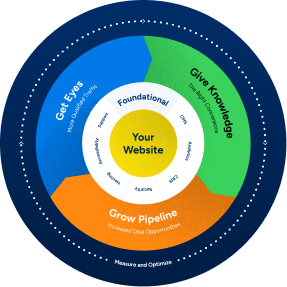What is an SEO Site Ranking?
The SEO site ranking is a number that indicates how well a website is doing in terms of search engine optimization. A higher ranking means that the site is more likely to show up in the search results for relevant keywords, and a lower ranking means that the site is less likely to show up in the search results.
Several factors contribute to a website’s SEO site ranking, including the quality of the content, the number of backlinks, and the overall authority of the site. To improve your site’s ranking, you will need to focus on all of these factors.
1. Content
One of the most important factors in determining your site’s ranking is the quality of your content. Your content should be well-written, keyword-rich, and informative. It should also be updated regularly to ensure that it remains relevant to the search engines.
2. Backlinks
Backlinks are links from other websites to yours. The more backlinks you have, the higher your site’s ranking will be. Backlinks are especially important if they come from high-quality websites.
3. Authority
The overall authority of your website is another important factor in determining your site’s ranking. Authority is determined by several factors, including the age of your domain, the number of backlinks you have, and the quality of your content.
Several other factors can influence your site’s ranking, but these are the three most important. If you focus on these factors, you should see a significant improvement in your site’s ranking.
4. Update Regularly
5. Use Keywords Strategically
6. Promote Your Content
7. Build Backlinks
8. Improve Your Site’s Load Time
9. Optimize Your Images
10. Use Google Analytics
Publish Relevant, Authoritative Content
One of the most important things you can do to improve your site’s ranking is to publish relevant, authoritative content. This content should be well-written and informative, and it should contain the keywords that your target audience is searching for. Publishing new content regularly is also important, as it will help to keep your site’s content fresh and relevant.
Update Your Content Regularly
Another important factor in determining your site’s ranking is how often you update your content. The search engines prefer websites that regularly publish new content, as this indicates that the site is active and relevant. If you want your site to rank well, you should aim to update your content at least once a week. Staying active and publishing content consistently lets consumers know that you are real and helps to legitimize your stature. When someone searches for an article or a product, the date published is one of the things that shows up under each article and can be critical to whether or not someone clicks on your link.
Identify Keywords
To improve your site’s ranking, you need to identify the keywords that your target audience is searching for and use them throughout your site. Keywords should be used in the title, in the body of the text, and the keywords section of your website. They should be directly related to the content you are working with and should always tie into your business’s identity and products. Make sure to spend some time discussing and brainstorming effective and powerful keywords that you want to relate to your brand. The use of keywords can be incredibly important to your website’s visibility on the internet, and ultimately, success.
Metadata
Metadata is information that describes your website’s content. The metadata includes the title, description, keywords, and other information that helps the search engines understand what your site is about.
There is no definitive answer to how exactly metadata can improve a site’s ranking for B2B SEO purposes, as the use of metadata can vary from site to site. However, some general tips on how to use metadata to improve a site’s ranking include:
- Use keyword-rich titles and descriptions: Titles and descriptions that include relevant keywords can help your site rank higher on search engine results pages (SERPs).
- Use structured data markup: Adding structured data markup to your site can help search engines understand your content better, which can, in turn, lead to improved ranking.
- Optimize your images: Including keywords in your image file names and alt text can help your site rank higher in image search results.
- Use social media tags: Adding social media tags (such as Twitter Cards) to your site can help your content get shared more widely, which can lead to improved ranking.
Have a link-worthy site
Link popularity is one of the most important factors in determining a site’s ranking. The number of links pointing to your site can influence your site’s position on the search engine results pages (SERPs).
There are several things you can do to increase the number of links pointing to your site, including:
- Creating high-quality content: Content that is informative, well-written, and relevant to your target audience is more likely to be shared and linked to.
- Creating infographics: Infographics are a popular way to share information, and they can also help to increase the number of links pointing to your site.
- Guest blogging: Writing guest blog posts on other websites can help to increase the number of links pointing to your site.
- Creating a blog: Having a blog on your website can help to increase the number of links pointing to your site, as well as provide fresh, relevant content that can improve your site’s ranking.
- Promoting your content: Sharing your content on social media and other websites can help to increase the number of links pointing to your site.
Use alt tags
Alt tags are text descriptions of images that help the search engines understand what is contained in an image. Alt tags can also help improve a site’s ranking, as they provide another opportunity to include relevant keywords.
Furthermore, an alt tag is an attribute added to an image tag in HTML. Alt tags are also known as “alt attributes” or “alt descriptions.” The alt tag provides a text description of the image, which can be read by search engines and screen readers. This makes your website more accessible and improves your SEO.
Some examples of using alt tags are:
<img src=”example1.jpg” alt=”This is an example of an image”>
<img src=”example2.jpg” alt=”This is another example of an image”>
Some tips for using alt tags to improve your site’s ranking include:
- Include relevant keywords: Be sure to include relevant keywords in your alt tags. This can help your site rank higher in image search results.
- Use descriptive text: Be sure to use descriptive text that accurately describes the contents of the image.
- Optimize the file name: The filename of an image can also be used as an alt tag. Be sure to include relevant keywords in the file name as well.
- Make sure the alt text is readable: The text in the alt tags should be easy to read and understand. This can help improve the usability of your site.
Connect with GoingClear & advance your digital growth!
GoingClear is a world-class in-house team of designers, developers, marketers, and strategists located in Boston, MA. They are experts when it comes to all things SEO and how to grow your website and online business, so give them a call today for a free consultation!

